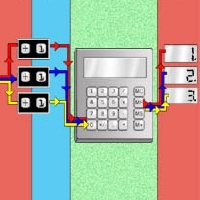The Nature of Computers
David L. Anderson: Author
 |
MODULE DESCRIPTION What exactly is a computer? What we see on a computer monitor are flashing lights and full color graphics. It is easy for students to be mystified by computers. This module introduces students to the basic concept of a computer as a device that implements functions. It uses simple analogies to explain how the same computer program can be implemented in wildly different kinds of material. The second component of the module begins with a discussion of the classical digital computer – the only kind of computer that most of us have ever worked with. It lays out the prominent features of digital computers (digital, serial, local, and deterministic) and provides a video animation that gives a dynamic analogy to help drive home the main concepts. Discussion then turns to non-classical computers, computers that lack all or most of the essential features of digital computers and have instead some or all of the following properties: analog, parallel, distributed, non-deterministic. Some strengths and weaknesses of the two different types of computer are briefly mentioned. |
MODULE COMPONENTS:
This is a simple introduction to the basic concept of a computer, requiring no background whatsoever. It helps students understand the concept of a function, and the computer's role in implementing those functions.
Computer Types: Classical vs. Non-classical
This module introduces students to the fundamental distinctions between classical and non-classical computers. Video animations help students grasp the fundamental differences between familiar digital computers and other computers that function differently.
Funding:
This module was supported by National Science Foundation Grants #9981217 and #0127561.


